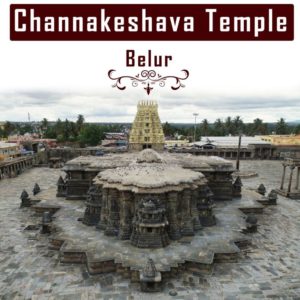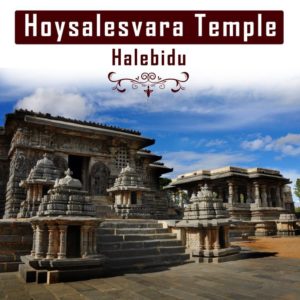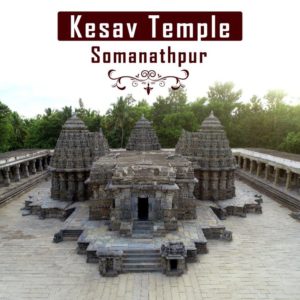ForumIAS announcing GS Foundation Program for UPSC CSE 2025-26 from 27th May. Click Here for more information.
Contents
What is the news?
Hoysala Temples of Belur, Halebid and Somnathapura in Karnataka have been finalised as India’s nomination for consideration as World Heritage for the year 2022-2023.
| Note: The ‘Sacred Ensembles of the Hoysala’ have been on UNESCO’s Tentative list since 2014. |
What are Sacred Ensembles of Hoysala?
Sacred Ensembles of Hoysala were built in the 12th-13th century.They are represented here by the three components of Belur, Halebid and Somnathpur.
The Hoysala temples have a basic Darvidian morphology though they reflect other influences including that of Central India’s Bhumija mode, northern and western India’s Nagara traditions, and Karnata Dravida modes of the Kalyani Chalukyas.
The Hoysala architect made selections of features from other temple styles, which they further modified with their own particular innovations. This resulted in a new Hoysala Temple form.
Chennakeshava Temple – Belur
Chennakeshava Temple is also referred to as Vijayanarayana Temple of Belur.It is a 12th-century Hindu temple in Karnataka.
The temple was commissioned by King Vishnuvardhana in 1117 CE, on the banks of the Yagachi River in Belur also called Velapura, an early Hoysala Empire capital.
The temple is devoted to Vishnu.
The richly sculptured exterior of the temple narrates scenes from the life of Vishnu and his reincarnations and the epics, Ramayana, and Mahabharata. However, some of the representations of Shiva are also included.
Hoysaleshwara Temple- Halebid
Hoysaleswara temple also referred simply as the Halebidu temple is a 12th-century Hindu temple dedicated to Shiva.
The temple was built in 1121CE during the reign of the Hoysala King, Vishnuvardhana Hoysaleshwara.
The temple is most well-known for the more than 240 wall sculptures that run all along the outer wall.
Keshava Temple- Somanathapura
Keshava Temple is a Vaishnava temple on the banks of River Kaveri at Somanathapura, Karnataka.
The temple was consecrated in 1258 CE by Somanatha Dandanayaka, a general of the Hoysala King Narasimha III.
The temple is enclosed in a courtyard with a pillared corridor of small shrines (damaged).The main temple in the centre is on a high star-shaped platform with three symmetrical sanctums (garbha-griha).
The western sanctum was for a statue of Kesava (missing), the northern sanctum of Janardhana and the southern sanctum of Venugopala, all forms of Vishnu.
Source: This post is based on the article “This is a great moment for India to see the Sacred Ensembles of the Hoysalas temples being submitted for inscription in the World Heritage List:Union Minister” published in PIB on 1st Feb 2022.







